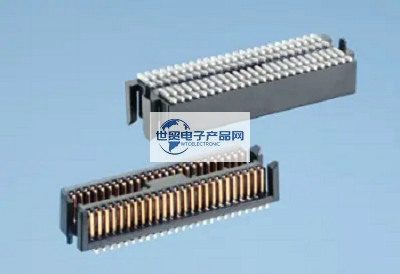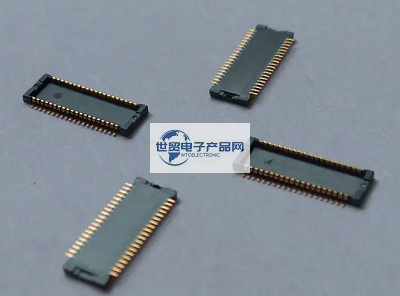Categorization:Product Information
Board-to-board connector manufacturers tell you how to choose connectors? There are many types of connectors, and the common types include communication interface terminals, terminal blocks, wire-to-board connectors, board-to-board connectors, etc. Each category can be subdivided into several categories, such as: board-to-board connectors include pin and female, board-to-board connectors, etc.; Wire-to-board connectors include FPC connectors, IDC sockets, simple horn holders, etc.

------------------------------------------------------------------------------------------------
So when choosing connectors, from what angles should we consider the connectors suitable for hardware use? 1. Pins, pitch The number of pins, and pin pitch are the basic basis for connector selection. How many pin-count connectors you choose depends on the number of signals you need to connect. For some patch connectors, the number of pins in the patch row as shown in the figure below should not be too much. Because during the welding process of the placement machine, due to the high temperature, the plastic of the connector will be deformed by heat, and the middle part will bulge, resulting in virtual soldering of the pins. In the early stage of development of our P800Flash programmer, this kind of pin row and mother row was used for inter-board connection. As a result, the pins of the prototype pin row were virtually soldered in a large area. After replacing it with two pins with half the number of pins, there was no false soldering again. Nowadays, electronic equipment is developing towards miniaturization and precision, and the pin pitch of connectors has also increased from 2.54 mm to 1.27 mm and then to 0.5 mm. The smaller the pin pitch, the higher the requirements for the production process. Pin spacing should depend on the company's production technology level, blindly pursuing small spacing 2. Electrical performance The electrical performance of connectors mainly includes: limiting current, contact resistance, insulation resistance and electrical strength, etc. When connecting a high-power power supply, pay attention to the limit current of the connector; When transmitting high-frequency signals such as LVDS, PCIe and other signals, pay attention to the contact resistance. The connector should have a low and constant contact resistance, typically tens of mΩ to hundreds of mΩ. 3. Environmental performance The environmental performance of the connector mainly includes: temperature resistance, humidity resistance, salt spray resistance, vibration, impact resistance, etc. Choose according to the specific application environment. If the application environment is relatively humid, the requirements for moisture resistance and salt spray resistance of the connector are high to prevent the metal contacts of the connector from being corroded. In the field of industrial control, the requirements for the anti-vibration and impact performance of connectors are high to prevent the connectors from falling off during vibration. 4. Mechanical properties The mechanical properties of the connector include plugging and unplugging force, mechanical foolproof, etc. Mechanical foolproof is very important for connectors. Once inserted backwards, it is likely to cause irreversible damage to the circuit! Pulling and pulling forces are divided into insertion force and separation force. Relevant standards stipulate greater insertion force and minimum separation force. From the perspective of use, the insertion force should be small and the separation force should be large. Too small separation force will reduce the reliability of contact. However, for connectors that often need to be plugged and unplugged, too much separation force will increase the difficulty of pulling out and reduce the mechanical life. In order to reduce the separation force of the connector and facilitate users to plug and unplug the adapter board, we made many attempts, and finally found a bright light on the road of groping. Finally, we selected the connector shown in the figure below and modified the PCB and product shell structure. The actual test shows that this connector has directional slot, obvious anti-fool effect, small insertion force, moderate separation force and good insertion and unplugging feel, which greatly improves the convenience of plugging and unplugging parts. Connectors, also commonly known as connectors by engineers, are used to connect two circuit boards or electronic devices to realize power or signal transmission. Through the connector, the circuit can be modularized, the assembly process of electronic products can be simplified, and the products can be maintained and upgraded easily. For modular circuits, the selection of connectors plays an important role.

-------------------------------------------------------------------5-----------------------------------------------5-------------------------------------------------------------------------------------------------------------------------------------------------------------------------------------- If you have related [connector wiring harness and cable production] purchasing/purchasing needs or want to purchase/understand which connector wiring harness and cable product solutions we can provide, please contact our business staff below; If you have related sales/resources and promotion needs of [Connector Wiring Harness and Cable Production], please click "→ Business Cooperation ←" to negotiate with a dedicated person!